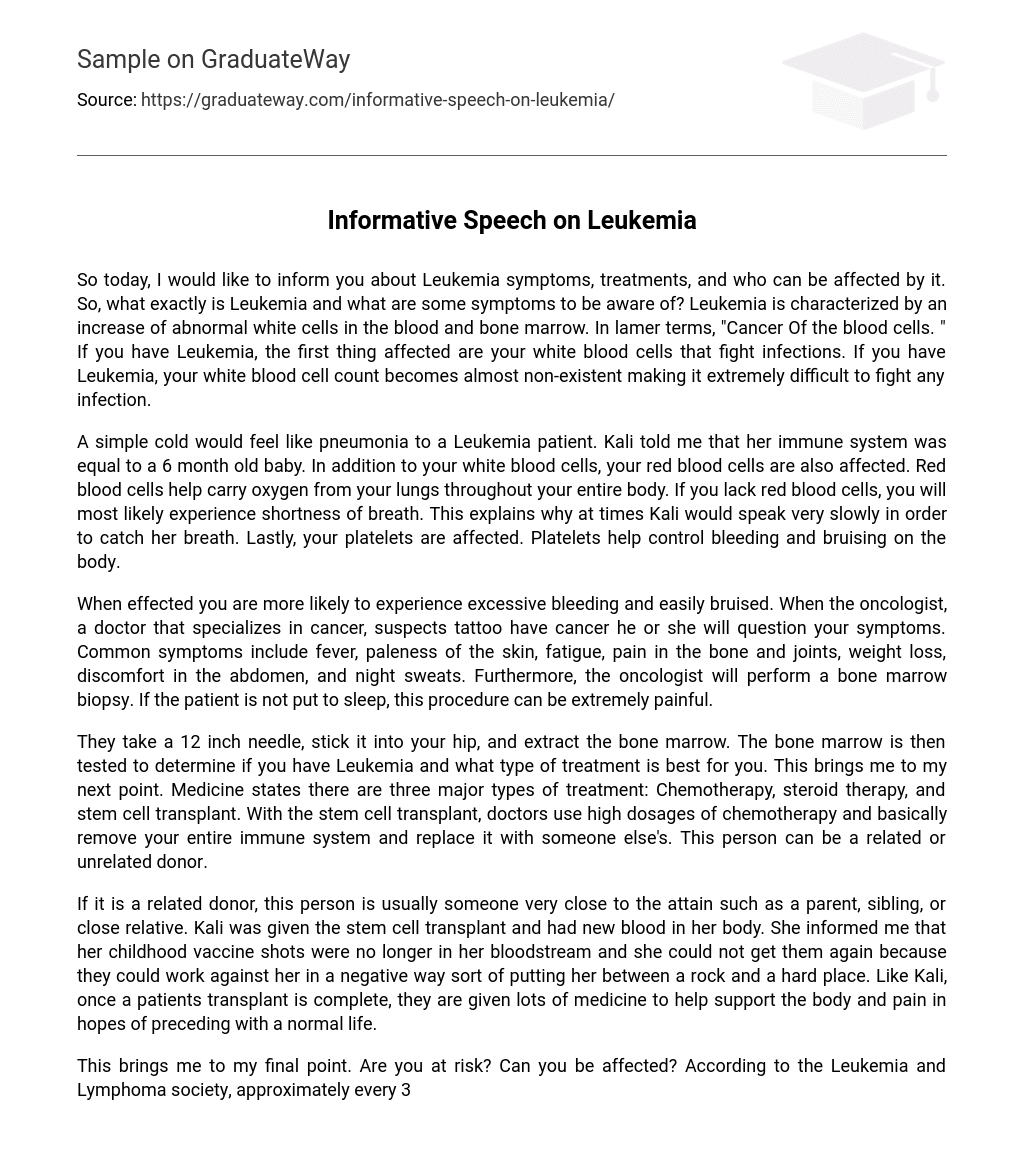So today, I would like to inform you about Leukemia symptoms, treatments, and who can be affected by it. So, what exactly is Leukemia and what are some symptoms to be aware of? Leukemia is characterized by an increase of abnormal white cells in the blood and bone marrow. In lamer terms, “Cancer Of the blood cells. ” If you have Leukemia, the first thing affected are your white blood cells that fight infections. If you have Leukemia, your white blood cell count becomes almost non-existent making it extremely difficult to fight any infection.
A simple cold would feel like pneumonia to a Leukemia patient. Kali told me that her immune system was equal to a 6 month old baby. In addition to your white blood cells, your red blood cells are also affected. Red blood cells help carry oxygen from your lungs throughout your entire body. If you lack red blood cells, you will most likely experience shortness of breath. This explains why at times Kali would speak very slowly in order to catch her breath. Lastly, your platelets are affected. Platelets help control bleeding and bruising on the body.
When effected you are more likely to experience excessive bleeding and easily bruised. When the oncologist, a doctor that specializes in cancer, suspects tattoo have cancer he or she will question your symptoms. Common symptoms include fever, paleness of the skin, fatigue, pain in the bone and joints, weight loss, discomfort in the abdomen, and night sweats. Furthermore, the oncologist will perform a bone marrow biopsy. If the patient is not put to sleep, this procedure can be extremely painful.
They take a 12 inch needle, stick it into your hip, and extract the bone marrow. The bone marrow is then tested to determine if you have Leukemia and what type of treatment is best for you. This brings me to my next point. Medicine states there are three major types of treatment: Chemotherapy, steroid therapy, and stem cell transplant. With the stem cell transplant, doctors use high dosages of chemotherapy and basically remove your entire immune system and replace it with someone else’s. This person can be a related or unrelated donor.
If it is a related donor, this person is usually someone very close to the attain such as a parent, sibling, or close relative. Kali was given the stem cell transplant and had new blood in her body. She informed me that her childhood vaccine shots were no longer in her bloodstream and she could not get them again because they could work against her in a negative way sort of putting her between a rock and a hard place. Like Kali, once a patients transplant is complete, they are given lots of medicine to help support the body and pain in hopes of preceding with a normal life.
This brings me to my final point. Are you at risk? Can you be affected? According to the Leukemia and Lymphoma society, approximately every 3 minutes someone in the United States is diagnosed with a blood cancer and approximately every 10 minutes someone dies from a blood cancer. There were an estimated 310,000 people living with or in remission from Leukemia in the United States. In this year alone, roughly 52,000 people were diagnosed and 24,000 are expected to die- 14,000 males and 10,000 females.
While there is no known ways to prevent Leukemia, the National Cancer Institute states that evolving Leukemia increases with several factors such as: smoking cigarettes and air pollution. Why should this be important and relevant to you? According to the Washington post, Louisiana has been given the name “Cancer Alley” because of the 1 50 petrochemical companies and 17 refineries that line the Mississippi River from New Orleans to Baton Rouge releasing dangerous levels Of toxins in the air we breathe in every day. We live in a State where cancer rates are to the roof.





